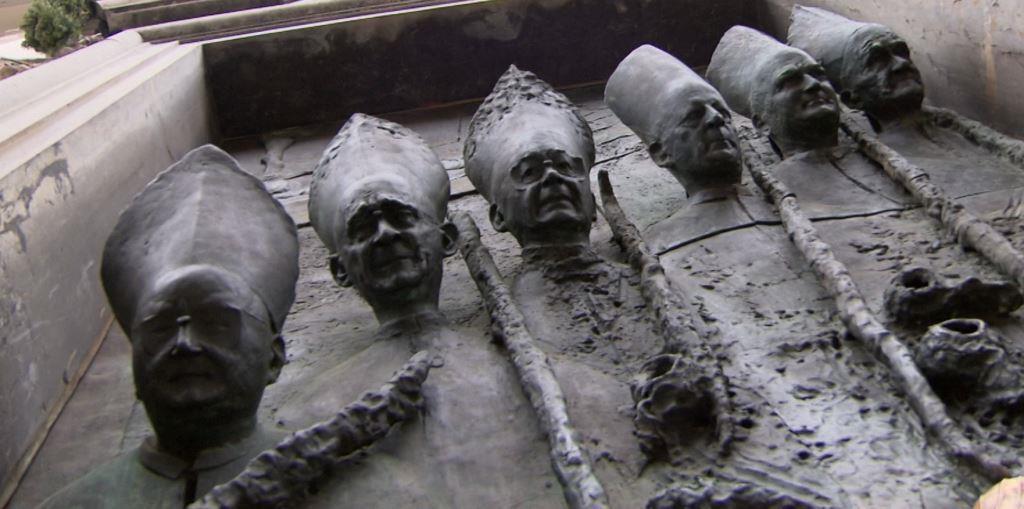

The Cathedral of St. Nicholas in Ljubljana is among the highlights of any tour of Ljubljana. Many visitors are particularly captivated by the church’s ornate side door, whose relief features Slovenia’s most influential bishops. The door is among several contemporary religious works of art created by Mirsad Begić – not a Slovenian Catholic, but a Muslim from Bosnia-Herzegovina.
Born in the town of Glamoč in 1953, Begić grew up in a religious Muslim family; his father was a noted scholar of the Quran. Begić attended an art-oriented high school on Sarajevo and drew attention to himself even there. He was chosen to create drawings of archeological excavations in the area.
He moved to Ljubljana and enrolled in the Academy of fine Arts. After his graduation in 1979, he went on to study at the St. Martin’s School of Art in London. However, he never felt fully at home in the UK, and when he completed his studies, he moved back to Ljubljana, a city he had grown to like.
Over the years, he emerged as one of Slovenia’s leading sculptors, known for his expressive style. He created statues of everyone from Ljubljana’s legendary mayor Ivan Harihar – his statue stands on the banks of the Ljubljanica River – to former president Janez Drnovšek and the architect Jože Plečnik. Many Slovenian poets, artists, and writers have been immortalized in bronze by Begić.
Begić also created sculptures of Pope John Paul II and Cardinal France Rode. In fact, he ended up developing a close working relationship with the Catholic Church. The relationship resulted in an unusual commission: Begić was asked to design the side door of Ljubljana’s St. Nicholas Cathedral.
The door, which includes portrayals of bishops who shaped the history of the Catholic Church in Slovenia, has become a major tourist attraction. The work impressed Church officials so much that they commissioned another church door from Begić. The recently unveiled main door to St. Nicholas’ Church in Novo Mesto includes images of emperor Rudolph IV, who founded the town, and two martyred nuns.
Begić has often remarked on the irony that someone who grew up in an observant Muslim family – a member of a faith that tends to look down on figurative art – has become closely identified with works portraying Catholic imagery. But just as his art reflects various influences, Begić’s cosmopolitan and multicultural spirit makes him very European.

































































